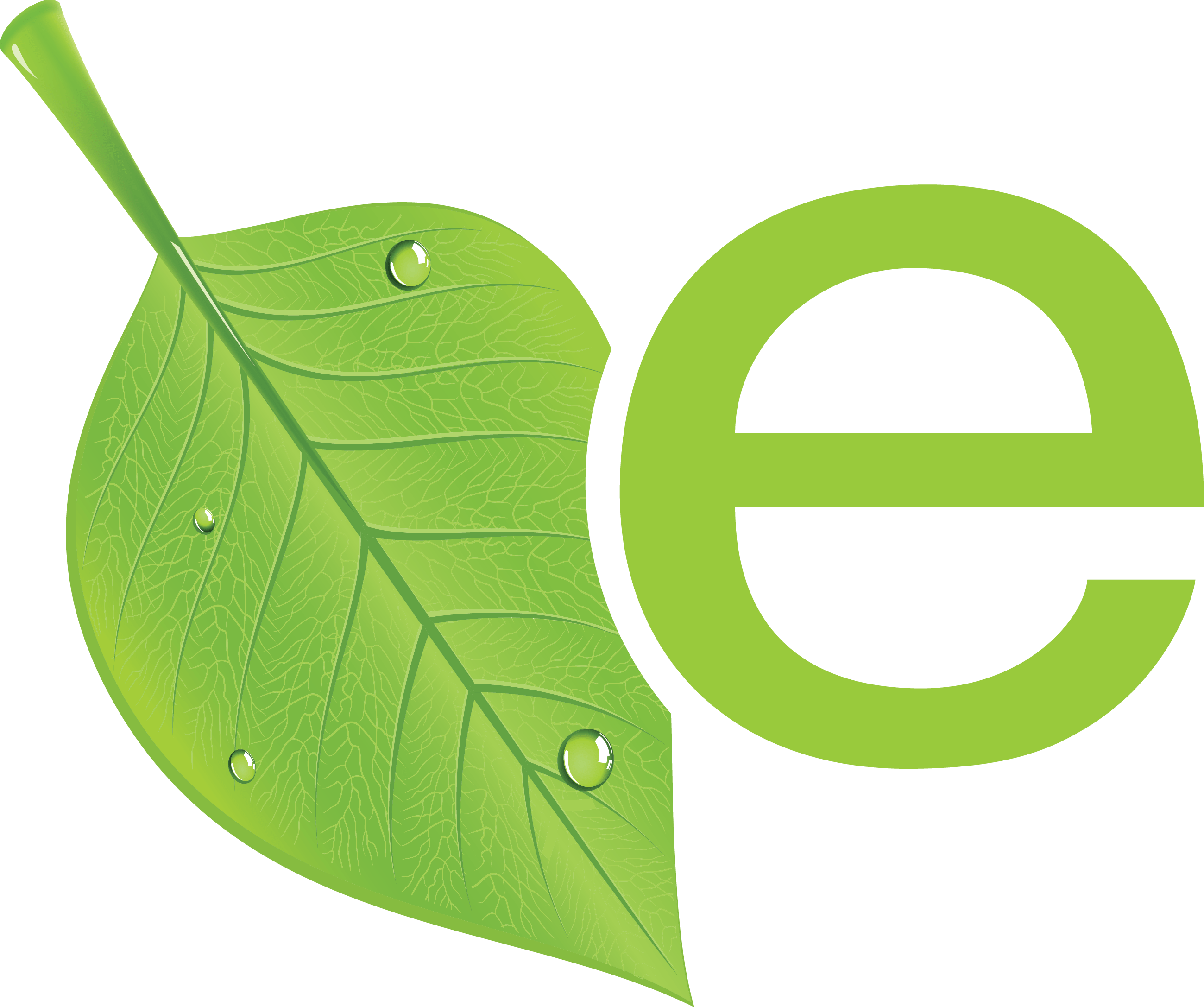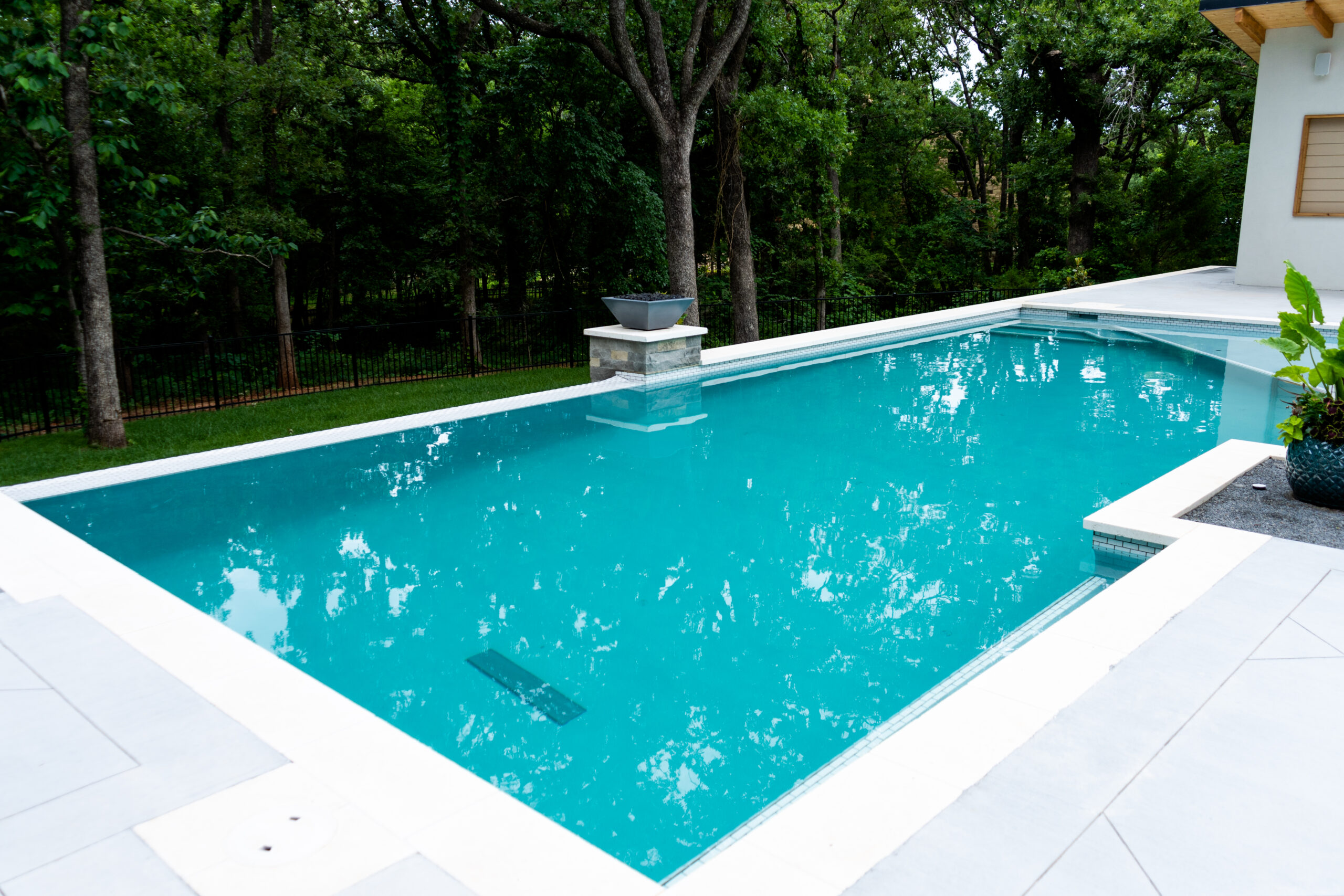
Many pool owners wonder how long their pool coatings will last. A fact to note is that a pool’s lifespan can significantly vary based on several factors. This article aims to cover those factors, discuss the different types of coatings available, and offer tips for maintenance to extend their life.
Factors Influencing the Lifespan of Pool Coatings
Several factors influence the longevity of pool coatings, including the type of paint used, climate conditions, usage frequency, and the surface material. These elements play a crucial role in determining how long pool coatings will last.
Type of paint used
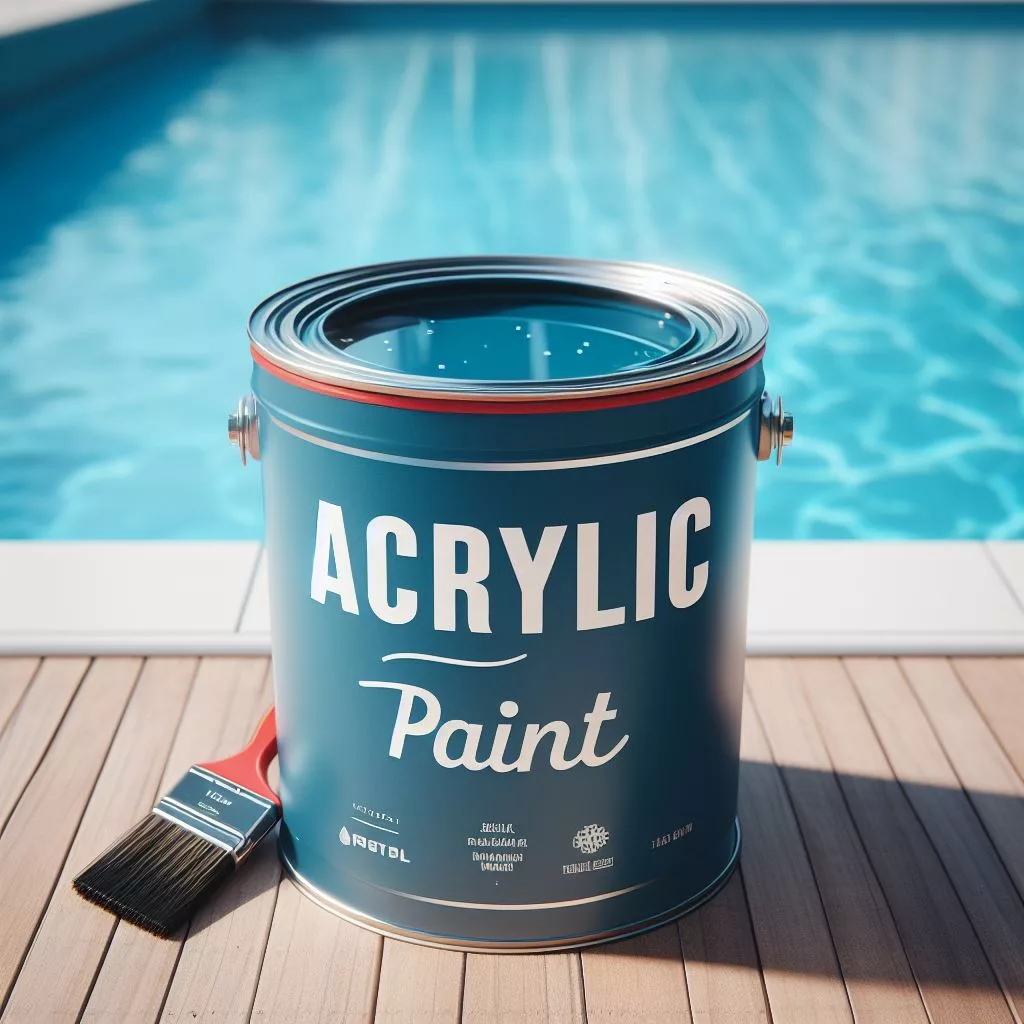
While paint is a popular coating, it’s important to know that the type of paint used on a pool significantly affects its lifespan and durability. Epoxy pool paint, known for its longevity, can last up to 10 years due to its strong resistance against chemicals and stains.
Water-based acrylic paints are more budget-friendly but require reapplication every 2 to 3 years because they tend to fade faster under sun exposure.
Polyurea coatings offer advanced flexibility, making them ideal for pools with frequent temperature changes or movements. Gelcoat finishes are specific to fiberglass pools, providing a smooth surface that lasts around 7 to 15 years before needing a refresh.
Each type of paint has unique benefits catering to different needs, from underwater durability in epoxy paints to the easy application of water-based acrylics.
Climate
The climate significantly impacts the lifespan of pool coatings. Extreme heat, cold, or high humidity can accelerate wear and tear on the paint, leading to premature coating failure.
Prolonged exposure to intense sunlight can cause fading and deterioration of the coating, while severe temperature fluctuations may cause cracking or peeling. Additionally, harsh weather conditions such as heavy rainfall, snow, or hail can also contribute to degradation over time.
The durability of pool coatings is affected by various environmental factors associated with different climates including temperature changes; UV ray intensity; precipitation levels like rain, snow; and overall humidity.
Amount of use the pool receives
The amount of use the pool receives significantly impacts the longevity of pool coatings. High traffic pools with frequent use may experience quicker wear and tear on the coating compared to pools that are used less often.
Regular use can lead to increased exposure to chemicals, sunlight, and friction from swimmers, which can contribute to more rapid deterioration of the coating over time. Proper maintenance and proactive inspection become even more crucial for heavily-used pools in order to maximize the lifespan of the coatings and ensure they remain durable against repeated usage.
Types of Pool Coatings
In addition to pool paint, there are other common types of pool coatings. Each type offers unique benefits and durability levels based on the specific needs of your pool surface.
ecoFINISH Coatings
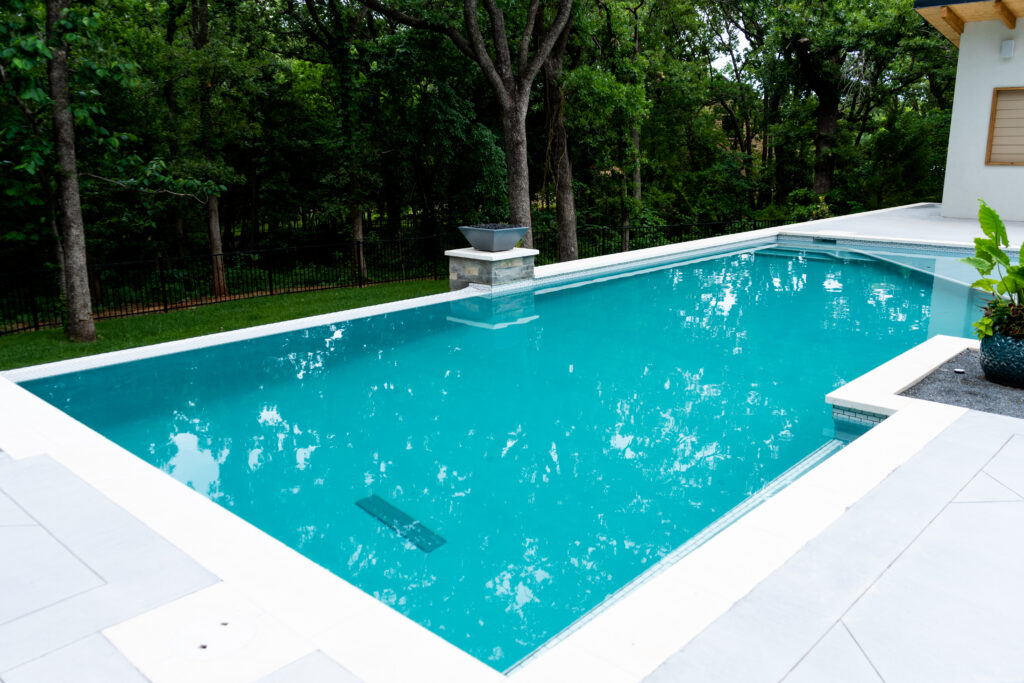
ecoFINISH is a notable option among pool coatings, particularly for those seeking durability and eco-friendliness. Unlike traditional paint coatings, ecoFINISH is a thermoplastic finish applied as a seamless, waterproof layer over the pool surface.
One of the key advantages of ecoFINISH is its exceptional longevity, often lasting over a decade with proper maintenance. Its resistance to UV rays, chemicals, and physical damage makes it a durable choice for pools subjected to harsh environmental conditions and frequent use.
Pebble Finishes
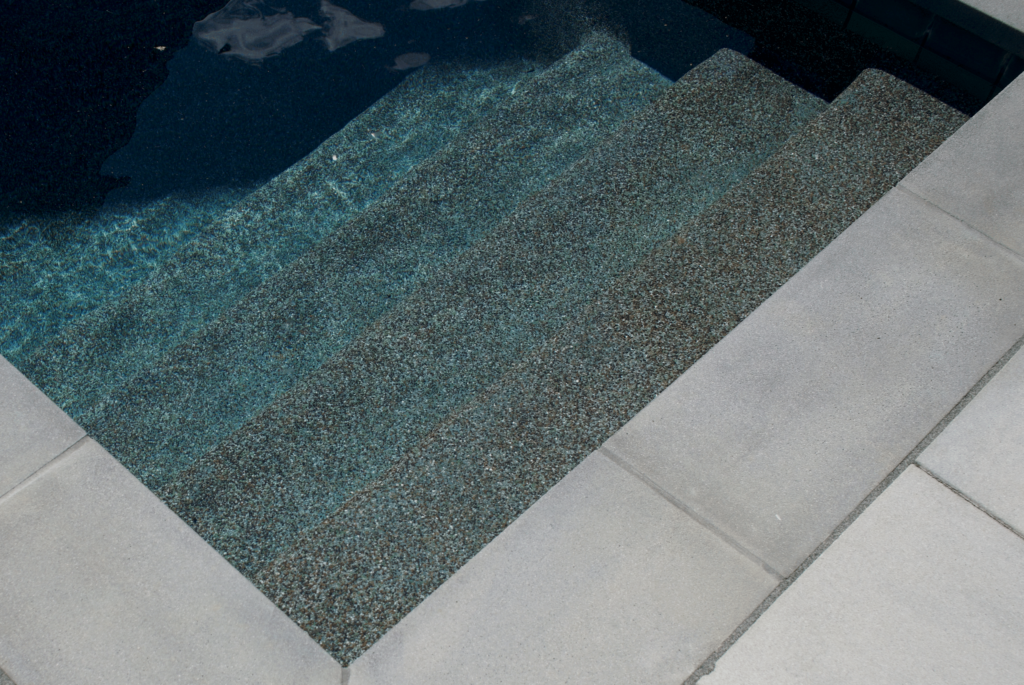
Among the array of pool coatings available, pebble finishes stand out for their durability and aesthetic appeal. Pebble finishes consist of small pebbles or stones mixed with concrete or plaster, creating a textured surface that enhances both the visual appeal and durability of the pool.
One of the key advantages of pebble finishes is their longevity, often lasting 10 to 15 years or more with proper maintenance. The natural stones used in the finish provide added strength and resistance to wear and tear, making pebble finishes an ideal choice for high-traffic pools.
Additionally, pebble finishes offer a range of colors and textures, allowing homeowners to customize their pool surfaces to match their aesthetic preferences. The textured surface also provides enhanced slip resistance, contributing to a safer swimming environment.
A similar option is quartz, which combines the durability of quartz aggregates with a durable resin binder. This creates a smooth yet textured surface that provides both aesthetic appeal and long-lasting durability.
Gelcoat for fiberglass pools
Transitioning from epoxy pool paint to gelcoat for fiberglass pools, it’s crucial to understand the unique characteristics of gelcoat. Unlike paint, gelcoat is specially formulated for use on fiberglass surfaces.
It serves as both a protective layer and an aesthetic finish, providing unparalleled durability and resilience in withstanding chemical exposure and UV rays. The application of gelcoat requires meticulous attention to detail to ensure a smooth and even finish that enhances the longevity of the pool surface.
Gelcoat offers superior adhesion, protecting your fiberglass pool against abrasions while maintaining its vibrant color. This specialized coating not only provides exceptional protection but also contributes to the overall structural integrity of the fiberglass pool, ensuring long-term preservation that stands up against various environmental factors.
Conclusion: Maximizing the Longevity of Your Pool Coatings.
Regular inspections and proactive repairs are crucial for extending the lifespan of your pool coatings. Proper cleaning and maintenance play a significant role in preserving the durability of pool finishes.
With these actions, you can ensure that your pool surface protection lasts longer, reducing the frequency of costly renovations.
